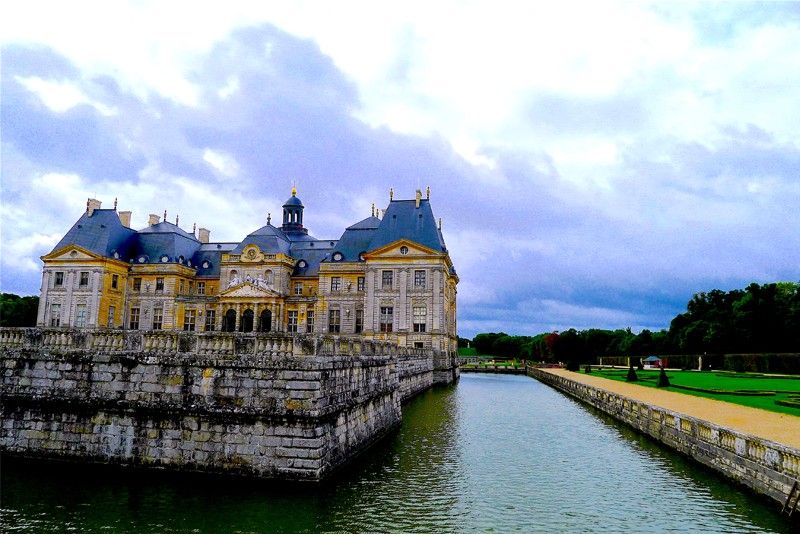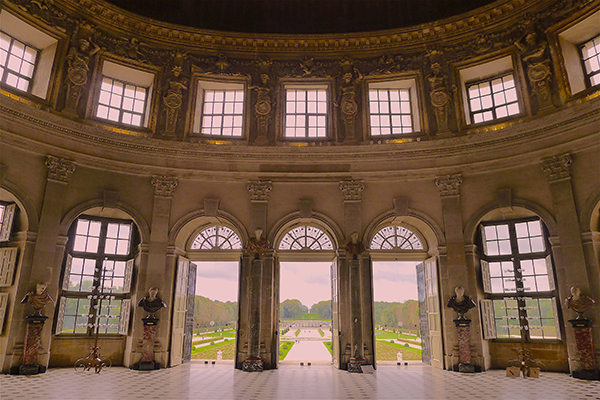Vaux-Le-Vicomte : Intrigue, jealousy and an inspiration for Versailles

Vaux-le-Vicomte is one of the most beautiful châteaus in France and one of the most important palaces built in the mid-17th century. The three geniuses of the Baroque era — Le Vau, Le Brun and Le Nôtre — worked as a team to produce the unity of architecture, interior design and garden layout that eventually distinguished the Louis XIV style, reaching its culmination at the Palace of Versailles. Photos by Ricky Toledo except when indicated
There was no doubt that Nicolas Fouquet was the man of the hour, the object of so much admiration and envy that had been building up since he was appointed minister of finance. Just like his family emblem, the squirrel, and motto “Quo non ascendet” (What heights will he not scale) he ascended rapidly in wealth and power, reaching the height of success on August 17, 1661 when he threw the most lavish soirée at his château, the Vaux-le-Vicomte, in honor of Louis XIV. The king had been eagerly anticipating this fête after everything he had heard about Nicolas Fouquet’s grand projet, not to mention rumors of how he enriched himself to be able to afford such magnificence. Unbeknownst to Fouquet, the visit of the king on that fateful day would be decisive in changing the course of his charmed life.
The soirée was also a housewarming of sorts for his newly completed palace, the most beautiful and most important of its time, the masterpiece creation of three geniuses of the Baroque era: the architect Louis Le Vau, the painter and interior designer Charles Le Brun and the landscape gardener André Le Nôtre. The château took five years to complete with no expense spared, including the hiring of 18,000 workers and the demolition of three villages.
Le Vau drew from the Italianate style as well as classical antiquity to create a powerful new style of his own that was realized at Vaux-le-Vicomte, laying the foundations of French architecture for the next century. Majestically positioned along a four kilometer axis, the palace surges from a series of planes like a theatre set. In an innovation for the period, the outbuildings in its forecourt guide the eye past tall gates to the façade with gardens laid out on either side, arranged in vast terraces. The great axis dominates, creating a sense of transparency from the entrance hall and Grand Salon all the way to the statue of Hercules that can be seen two kilometers further south. What a spectacular entrance indeed for the king and his entourage.

The Grand Salon from where you can see the formal gardens all the way to the south end where the statue of Hercules stands.
But there was more to admire with the interior decoration of Le Brun who designed the paintings, the tapestries, the furniture and the elaborate stucco decoration which was executed by Francois Girardon who also created the interior statuaries. Special attention was given to the ceilings which had delicately painted exposed beams done in the French tradition. The decoration reaches unrivalled opulence at the Chambre du Roi with intricate allegorical paintings, ornate moldings and figures in full relief reminiscent of Pietro da Cortona’s work in the Pitti Palace in Florence. It is made even more luxurious with fine, marble statues and busts on pedestals, reflecting Fouquet’s passion for antiques.
Venturing out into the formal gardens designed by Le Nôtre, Louis XIV no doubt would have seen the seeds for his future gardens in Versailles. Using the latest technical, scientific and artistic knowledge of his era, the designer laid out the landscape in a rectangle that spans the length from the main gate to the south, attracting one’s view towards the horizon to evoke a feeling of infinity, giving the illusion that the garden continues uninterrupted all the way to the distant grottoes that flow into a square pond called the “Arpent d’Eau.” There are actually many hidden gardens along the way and a multitude of pools of water, both in number as well as in different shapes and sizes which are not immediately seen when looking out from the chateau because of the different levels of terraces, making the stage by stage exploration quite an adventure filled with many surprises. Lush and vivid flowerbeds reflect off the watery surfaces to form a colorful painter’s palette, punctuated by allegorical statues of mythological figures, gods and goddesses that embody the owner’s power and influence. Le Nôtre’s signature style became the benchmark that spread throughout the continent as Europe adopted the “jardin à la francaise” aesthetic which remains a potent symbol of the 17th century to this day.
But if the Vaux-le-Vicomte turned out to be a masterpiece of beauty and harmony, it is also because of Fouquet’s artistic and cultivated personality that brought out the best in the three masters. Aside from making the palace a symbol of his status, he wanted it to be a château for pleasure dedicated to a life of leisure, high ceremony and etiquette: hosting plays, ballets, literary salons, game rooms and the most exquisite banquets. Everything fit for a king, in other words. He actually hoped that Louis would use the château as a royal residence during the course of his travels and in fact devoted a wing of royal apartments for this purpose, with the décor to match: Omnipresent were figures representing desirable kingly virtues: Jupiter for power, Mars for valour, Mercury for vigilance and Vertumnus for abundance.

Le No?tre’s seminal expression of the jardin a? la franc?aise, the French aesthetic of formal gardens that swept Europe in the 17th century
For this inaugural party, Fouqet’s maître d’hôtel and cuisinière François Vatel was tasked to supervise all the meals and various entertainments and to coordinate the programs to make sure everything was properly executed and on time. “The delicacy and choiceness of the dishes served were outstanding. But the graciousness with which the Superintendent and his wife did the honour of their house was even more so,” said the poet Jean de la Fontaine. After dinner, there was even a premier performance of a play by Moliere who wrote it just for the occasion. In between scenes, there were dance interludes composed by Pierre Beauchamp and Lully, virtually launching a new style of theatre that came to be known as the comédie-ballet. To cap the evening, at about one in the morning, the sky was lit up with an impressive show of fireworks above as well as a giant whale and other sea creatures emanating more fireworks in the waters below, an obviously expensive extravagance which was a glorious farewell for the king and his party who decided to make their way back to Fontainebleau despite Fouquet’s insistence that they spend the night at the palace.
The reason for the king’s refusal to stay overnight only became clear three weeks later when Fouquet was arrested by D’Artagnan, captain of the king’s musketeers. Little did he know that Louis had already decided to have him tried after Jean-Baptiste Colbert convinced the king that Fouquet was embezzling state funds to enrich himself. Upon seeing the magnificence of Vaux-le-Vicomte with gardens and rooms that even surpassed what he had in his own residences and with such an enchanting and impeccably orchestrated fête that was more extravagant than any he had ever hosted before, Louis XIV actually wanted to arrest the minister on that very day of the party but was convinced by his courtiers to just wait for the right time. A trial thereafter sentenced Fouquet to life imprisonment and banished his wife and family to exile. The château was sequestered and all furnishings were confiscated including works of art that made their way to the royal collections and orange trees that went to the royal gardens. And the king’s greatest revenge? He hired the same triumvirate of artists – Le Vau, Le Brun and Le Nôtre and the artists and staff who worked on Vaux-le-Vicomte to work on a project that he vowed would be grander than anything the world had ever seen: The palace and gardens of Versailles. If a minister like Fouquet could be king for a day, after all, can you imagine what a real king, an upstaged one at that, could achieve?
Log on to www.vaux-le-vicomte.com for details. Follow the authors on Instagram @ rickytchitov ; Twitter @RickyToledo23 Facebook - Ricky Toledo Chito Vijandre



















